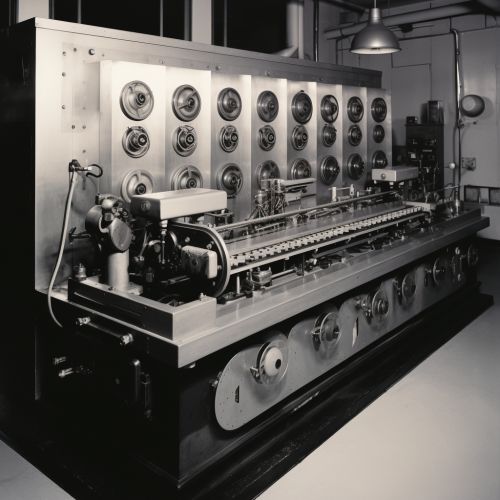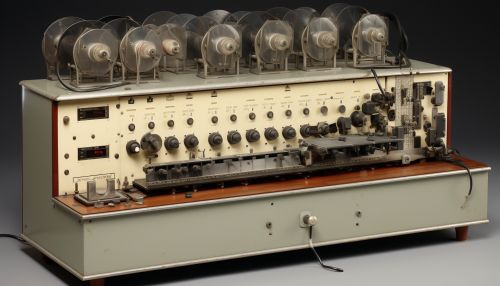Harvard Mark I
Introduction
The Harvard Mark I was a pioneering machine in the field of computer science and technology. It was an electromechanical computer, designed and built during World War II, that laid the groundwork for modern computing.
History
The Harvard Mark I, also known as the IBM Automatic Sequence Controlled Calculator (ASCC), was conceived by Howard Aiken, a doctoral student at Harvard University. Aiken's vision was to build a machine that could handle large calculations automatically, eliminating the need for human computation and reducing the possibility of errors. The project was funded by IBM and was built in their Endicott laboratories in New York.
Design and Construction
The Harvard Mark I was a large machine, measuring 51 feet long, 8 feet high, and 2 feet wide. It was constructed from an array of mechanical and electrical components, including 3,304 electromechanical relays and 765,000 mechanical parts. It used punched cards to input data and instructions, a method pioneered by Herman Hollerith for the 1890 U.S. Census.
Operation
The operation of the Harvard Mark I was controlled by a sequence of instructions read from a punched paper tape. The machine was capable of performing addition, subtraction, multiplication, division, and reference to previous results. It could perform complex sequences of operations, including loops, branches, and subroutine calls.
Impact and Legacy
The Harvard Mark I was a significant milestone in the development of computer technology. It was the first machine to automatically execute long computations, a fundamental concept in modern computing. The machine's design influenced the development of subsequent computers, including the Harvard Mark II and the IBM SSEC.
See Also


